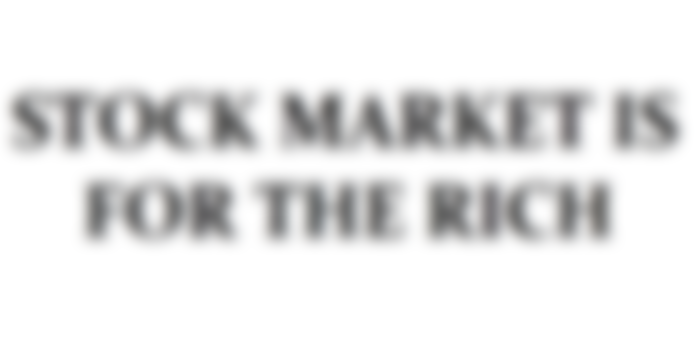Before you give in to the hype and the lucrative craze of the stock market, it is important to know what the stock market is and how it operates. In this post, I will attempt to explain the very basics of the stock markets and how it all came about to be.
This should succeed to give you a basic understanding of the topic and allow you to further dive into the stock market.
However, anything and everything in this read is not financial advice nor am I responsible for any of your trading activity.

The modern stock market is at the heart of current economics and the open secret of the richest. It also is a clever result of a tedious problem from the 1600s. Back when the monopoly of the Dutch India Company was just about to break peak. Yes, the infamous company that traded in gold, spices, and silk gave birth to the stock market.
Back then it was much simpler. Today, the market is almost a science. With degrees, studies, students, and careers based around it. The DIC was shipping their goods on a massive scale all over the world. However, it was becoming more and more expensive by the day to run such a huge program. They also needed to expand their budget to fit in wider shipments and for a bigger product range with the growing demand.
The creative solution they came up with, was what began the very first stock market. They approached the richer citizens to fund their programs, and in return, the investors would receive a portion of the ship's profits. The incoming investments from citizens allowed DIC to carry out larger voyages and supply more parts of the globe. Which gave both DIC and the investors a bigger profit.
This became the very beginning of the modern stock market, as we know it. Today, companies turn to willing investors for an investment in their projects. Albeit it is important to note that the modern stock market is much more complicated, as expected from any developed form of science does with time.
Nowadays, when a company wants to launch itself in the market, they first advertise itself hoping to attract investors. If the investors are convinced that the company has potential, they chip in the very first "ka-chings". This is called an IPO (initial public offering).
With a successful IPO (or unsuccessful) the company is now listed in the public market. Now, individuals or companies, who think the company will do good can start purchasing shares of the said company in hopes of a profit. The shareowners also become partial owners of the company. The money the company receives from the purchases of shares allows it to fund more endeavors and grow. Much like DIC, who used the money to send more ships to more places.
As the company grows, more and more investors could see it as a potential moneymaker and chip in to buy their shares. This creates the fundamentals of economics - supply and demand. As the demand for the shares grows, the supply tightens up and causes the prices of the shares to increase.
This makes the company's stocks seem more valuable and increases their value in the market, which makes them more desirable to investors. It also increases the value of the shares owned by older stockholders. The company can keep growing and developing with the increased value.

However, it is also important to note that I used the word "seem".
This word is incredibly powerful in the market. Just as how the increasing value of the stock prices may make the company's value looks higher, it also makes it more desirable. But for any stupid reason, the company's stock can take a hit and the prices can come crashing.
Albeit the company is still good and their project is marvellous, the dropping price may make it seem like the company is terrible and actually lead it to go down the drain.
This can be for many reasons. Maybe like when some people didn't like Elon smoking a joint in an interview. Or maybe when he tweeted something incredibly funny in April 1st and some investors took it seriously. The result was the prices of $TSLA taking a tumble. Even though his projects were amazing, the lowering price made $TSLA seem like a goner and the price took a good tumbling downwards.
Once the company looks like it is going to take a hit, people will try to sell their stocks before they take a loss, or better with as much profit as they can. The lowering price can start making the company seem as less profitable and the demand for the stocks starts declining, which makes the price go down, and the company's market value.
But, all is not gone. The price can go up again.

There are plenty of factors that are taken into account for a particular stock to go up or down. It can simply go up or down for things that are objective but simply because of the "seems like"s.
Then there are silly factors like the tweet that Elon put out. Then there are serious factors like the pandemic, government bailouts, laws, technology related to the company, trade policies and so much more. Even big individual traders that "exit" to invest their profits into something else plays a huge role.
So now you can see how and why the charts of stocks have a different type of movement almost every day.
It is true that something that can make a company seem unprofitable can actually lead to the company becoming really unprofitable. The various factors are always in play and that is why the stock market is very, very risky. That also may be a reason why long-term investment is graded higher and safer than short-term investment for a quick buck.

The belief that the stock market is only for the rich cannot be farther than the truth. In today's time, anyone and everyone can begin their stock market journey at any moment. All you need is an internet connection and the right platform. There are plenty of tools and sources in the internet that can help you get yourself educated about trading and trends. There are plenty of platforms that will allow you to start investing in stocks.
So, make sure to do research, study, and learn. The main factor that influences the market is human confidence. And once you have the basics down, you can start influencing the market yourself and become part of the human confidence that factors the market's movements.



